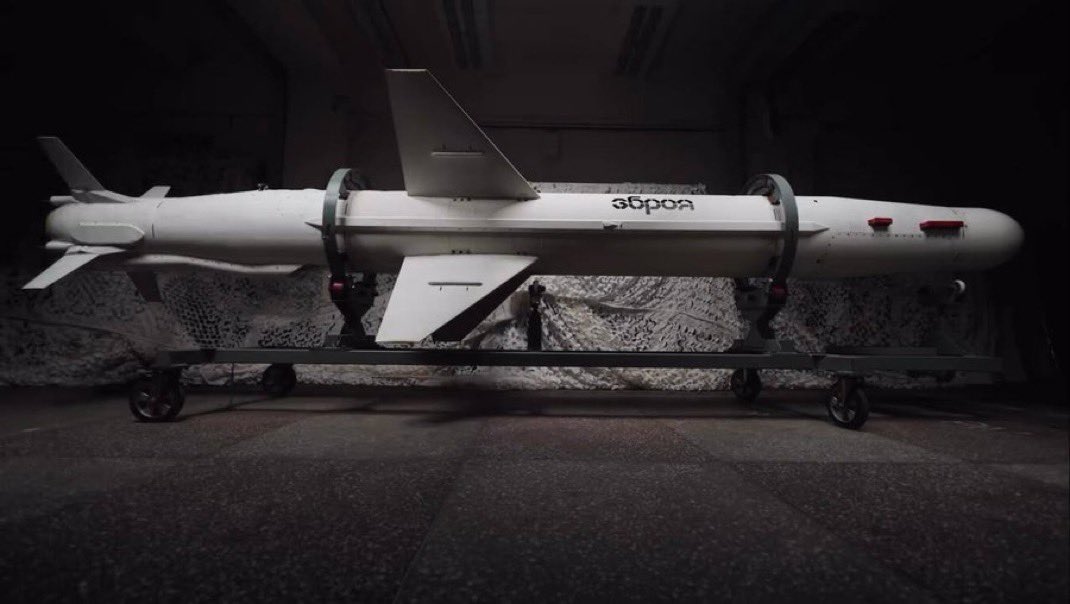Ukraine has officially unveiled the upgraded R-360 Neptune cruise missile, informally dubbed the ‘Long Neptune’, marking a major step in expanding the country’s deep-strike capabilities against Russian targets. The missile, reportedly capable of reaching up to 1,000 km, represents a significant improvement over the original domestically produced Neptune, which had a range of 300 km and famously sank the Russian Black Sea Fleet flagship, Moskva, in April 2022.
The timing of the unveiling carries symbolic weight, coming just after the Day of the National Flag on 23 August and Independence Day on 24 August, holidays that celebrate Ukraine’s sovereignty and national identity. The Luch Design Bureau’s improvements, which reportedly include infrared and electro-optical guidance systems, suggest Kyiv is preparing for precise strikes deep into enemy territory. Analysts speculate that this new capability could influence ongoing debates regarding US authorization of long-range missile use, as Washington has historically restricted Ukraine’s deployment of ATACMS missiles inside Russia to avoid escalation.
President Donald Trump criticized these restrictions in August 2025, claiming Ukraine would have ‘no chance of winning’ if denied the ability to directly target Russian positions. His remarks, widely shared on social media, have reignited debate over whether the deployment of the Long Neptune could shift the strategic balance.
‘Kyiv is preparing for precise strikes deep into enemy territory’
The unveiling also comes amid heightened regional tensions. Moscow has recently demonstrated its ability to strike targets near the Hungarian border, in the Mukachevo area, home to the largest concentration of ethnic Hungarians in Zakarpattia. Such strikes have provoked alarm, heightening fears in neighbouring states. Ukrainian authorities have reportedly already used the Long Neptune in strikes against Russian infrastructure, including a refinery in Tuapse, signalling Kyiv’s intent to leverage the new system immediately and offset the threat posed by Russia’s own deep-strike capabilities.
From a regional perspective, Hungary and neighbouring states remain attentive to Ukraine’s enhanced arsenal and the parallel debate over US-supplied armaments. At the same time, Ukraine’s military actions have intensified, with recent strikes on the Druzhba oil pipeline, a vital energy artery supplying Russian oil to Hungary and Slovakia. These attacks have disrupted energy flows, raising concerns about energy security. Hungary and Slovakia have voiced strong discontent, urging Ukraine to halt such operations to avoid further destabilizing the region.
By linking the unveiling with Flag Day and Independence Day, Ukraine has reinforced domestic support for military innovation, blending symbolic national observances with strategic defence initiatives. The Long Neptune missile underscores Ukraine’s determination to expand its autonomous strike capabilities. Combined with US policy debates, social media discourse, and the ongoing threat of Russian escalation near the Hungarian border, the development highlights the complex interplay between technological advancement, international support, and regional security.
Related articles:







